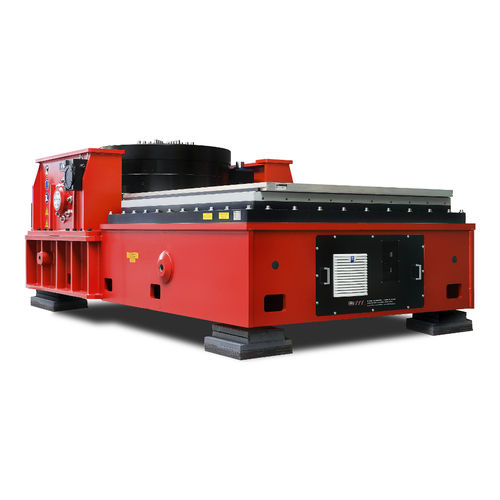
- Metrology - Laboratory
- Metrology and Test Equipment
- Shock testing machine
- RMS Regelungs- und Messtechnik Dipl.-Ing. Schäfer GmbH & Co. KG
- Products
- Catalogs
- News & Trends
- Exhibitions
Shock testing machine SW9500 vibrationautomaticbattery

Add to favorites
Compare this product
Characteristics
- Test type
- shock, vibration
- Operating mode
- automatic
- Test material
- battery
- Sector
- for the automotive industry
- Technology
- electro-dynamic
- Configuration
- compact
- Other characteristics
- precision
Description
Low maintenance, high economical and for handling large test objects.
Our systems of the SW9500 series shakers suits perfect for testing large-sized test objects with high mass e.g. in the development of battery electric vehicle.
The special geometry of the magnetic frame allows a high level of excitation force with minimal energy consumption.The wear-free return spring system works without rollers or roller-like additives. This is why this RMS system has a high degree of lateral rigidity despite a travel amplitude of 76 mm pk-pk. And of course, the SW9500 series meets all current standards from the automotive, aerospace and consumer industries.
Designed for continuous 24/7 use under full load, the shakers in this series ensure maximum operational stability and are also particularly low-maintenance.
HIGHLIGHTS AT A GLANCE
• Up to 140 kN Sine/ Noise
• Up 320 kN Shock Force
• 3,5 m/s for 100g / 11 ms Shocks
• Quite Shaker: only 57dBA emission
• Quite Amplifier: only 65dBA emission
• High precision: to full power without significant noise (68db signal to noise) thanks to SIC
• Fully automatic center positioning
• ECO mode for maximum energy savings
• Complies with enev2016 and iso14001
• Water cooling makes it more energy-efficient and space-saving
• Modular & compact design with many expansion stages
Other RMS Regelungs- und Messtechnik Dipl.-Ing. Schäfer GmbH & Co. KG products
Electrodynamic vibration test systems
Related Searches
- Test machine
- Test stand
- Material testing machine
- Automatic test machine
- Automatic test stand
- Industrial test machine
- Laboratory test machine
- Precision test machine
- Industrial test bench
- Test machine for the automotive industry
- Impact test machine
- Battery test machine
- Compact test machine
- Shock testing machine
- Vibration test machine
- Endurance testing machine
- Pneumatic testing machine
- Static test stand
- Dynamic test stand
- Electro-dynamic test machine
*Prices are pre-tax. They exclude delivery charges and customs duties and do not include additional charges for installation or activation options. Prices are indicative only and may vary by country, with changes to the cost of raw materials and exchange rates.





